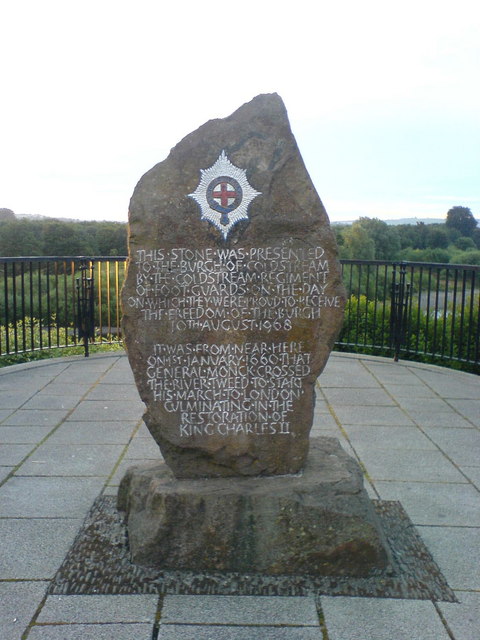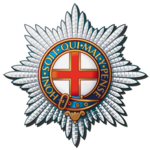| This Week’s Topic… | |||

Best viewed in
|
Coldstream
Officially the Coldstream Guards are known as Her Majesty's Coldstream Regiment of Foot Guards. They are part of the Guards Division or Household Division. The regiment is ranked second in the order of precedence, behind the Grenadier Guards. This is because the Grenadier Guards have served the Crown for a longer period of time. However, the Coldstream Guards is an older regiment, and because of this, has the motto Nulli Secundus (Second to None). The regiment has never been termed the "Second Regiment of Foot Guards" and, when parading with the other four regiments, is always on the extreme left of the line, with the Grenadier Guards on the extreme right. This ensures that the regiment is indeed "Second to None". Their nickname is 'Lilywhites'. An ordinary soldier of the regiment is called a Guardsman, a designation granted by King George V after the First World War. The regiment is always referred to as the Coldstream, never as the Coldstreams, likewise a member of the regiment is referred to as a Coldstreamer. From the earliest days the Regiment had drummers and a "Band of Music" from 1742. This was in fact eight civilian musicians who were hired by the month by Officers of the Regiment to provide music for the Changing of the Guard at St.James' Palace. When, in 1785, the musicians were asked to perform at an aquatic excursion to Greenwich, they declined on the grounds that the performance was "incompatible with their several respectable and private engagements." This was too much for the officers who asked the Duke of York, Colonel of the Regiment, for a regular attested band. He agreed and from Hanover in Germany sent twelve musicians under the direction of Music Major C.F. Eley. The instrumentation consisted of two oboes, four clarinets, two bassoons, two horns, one trumpet and a Serpent. The date of the band's formation was May 16th, 1785. In 1984 the band moved into the newly completed Wellington Barracks and for the first time since the band was formed has official accommodation. The accommodation comprises of full changing and official facilities and a fine practice room. Before this the band had no permanent residence and at one stage rehearsed in a room above a public house in Chelsea! The Band of The Coldstream Guards has now been in existence for over 200 years of continuous service which makes it one of the oldest Military Bands in the world.
|
||

